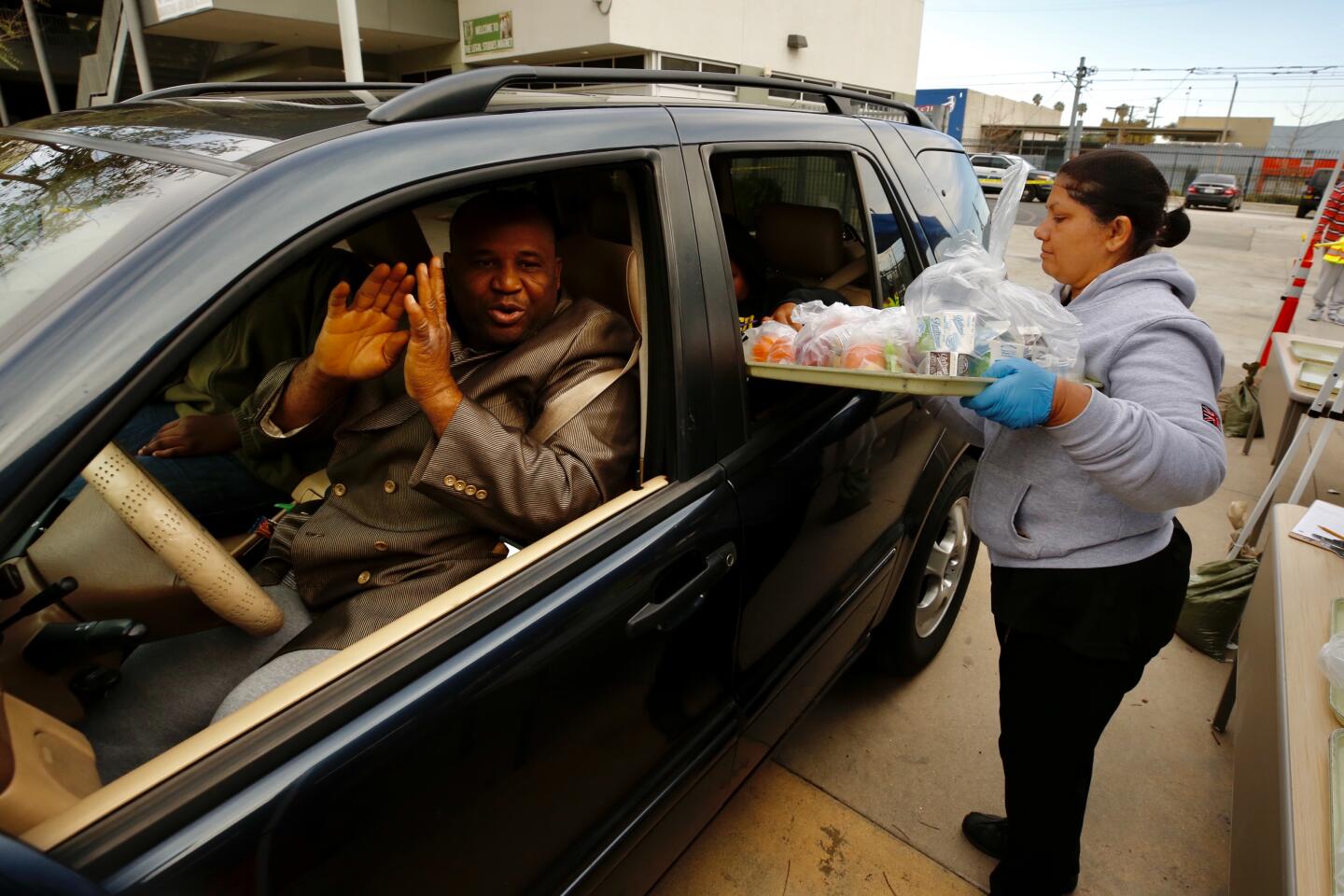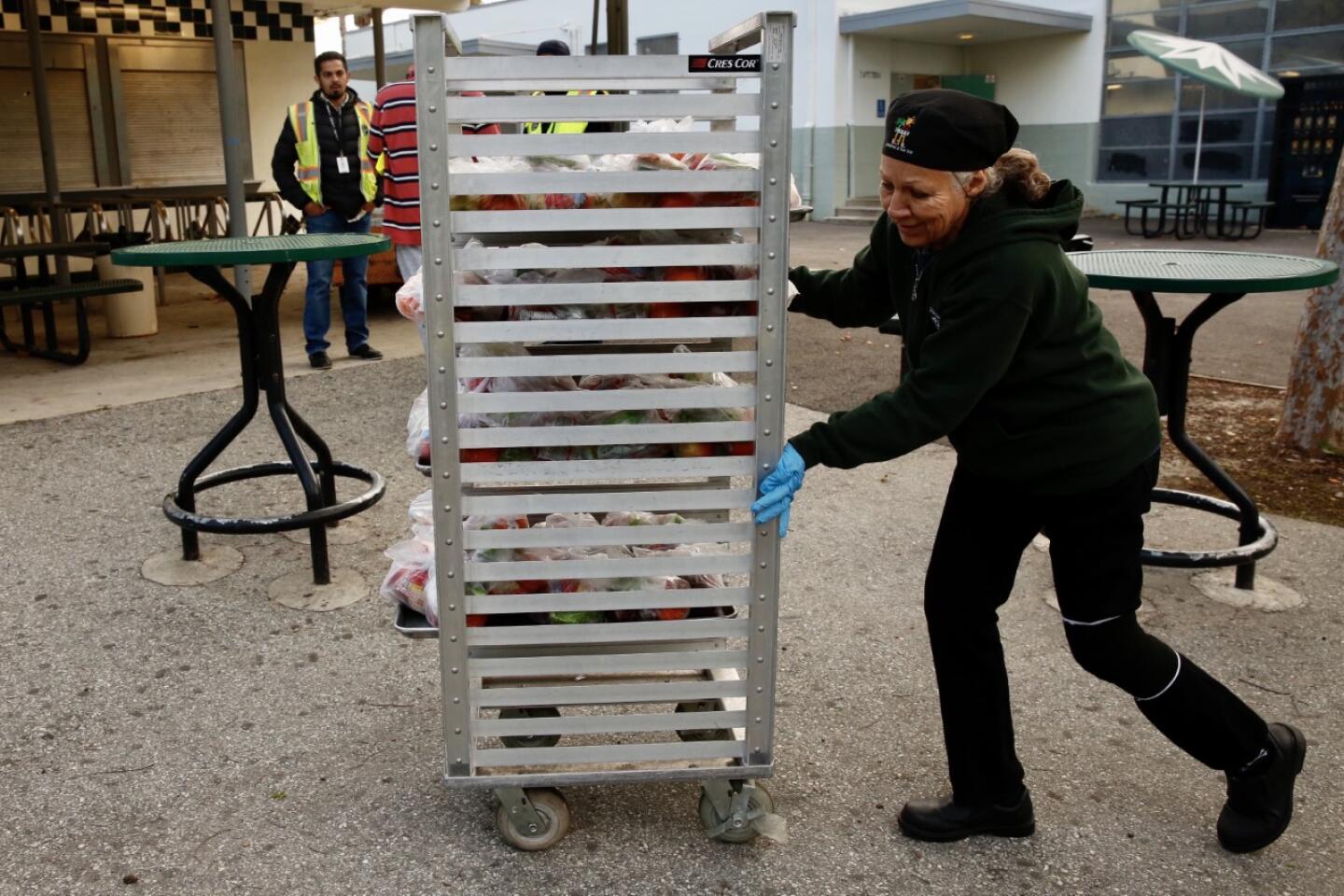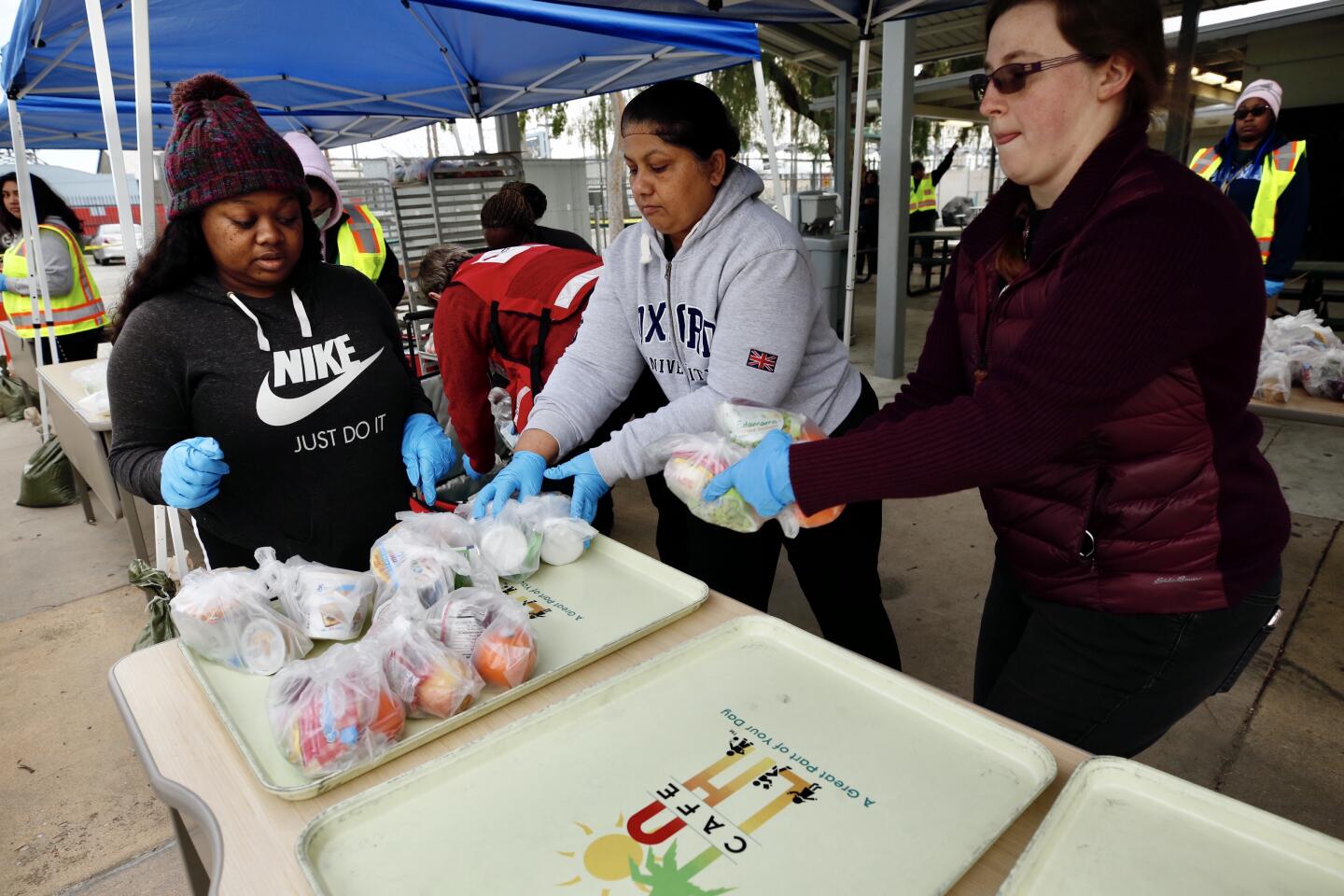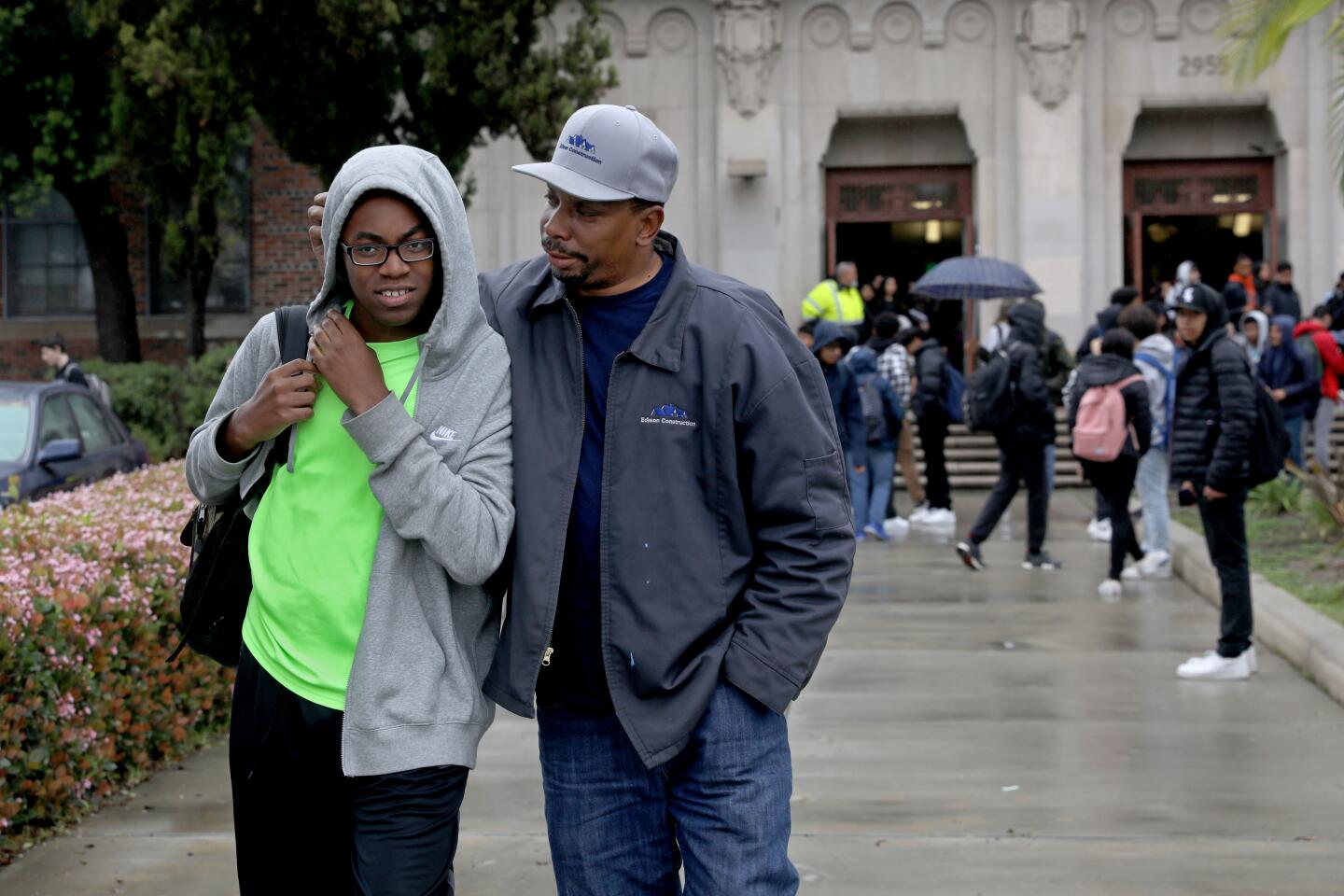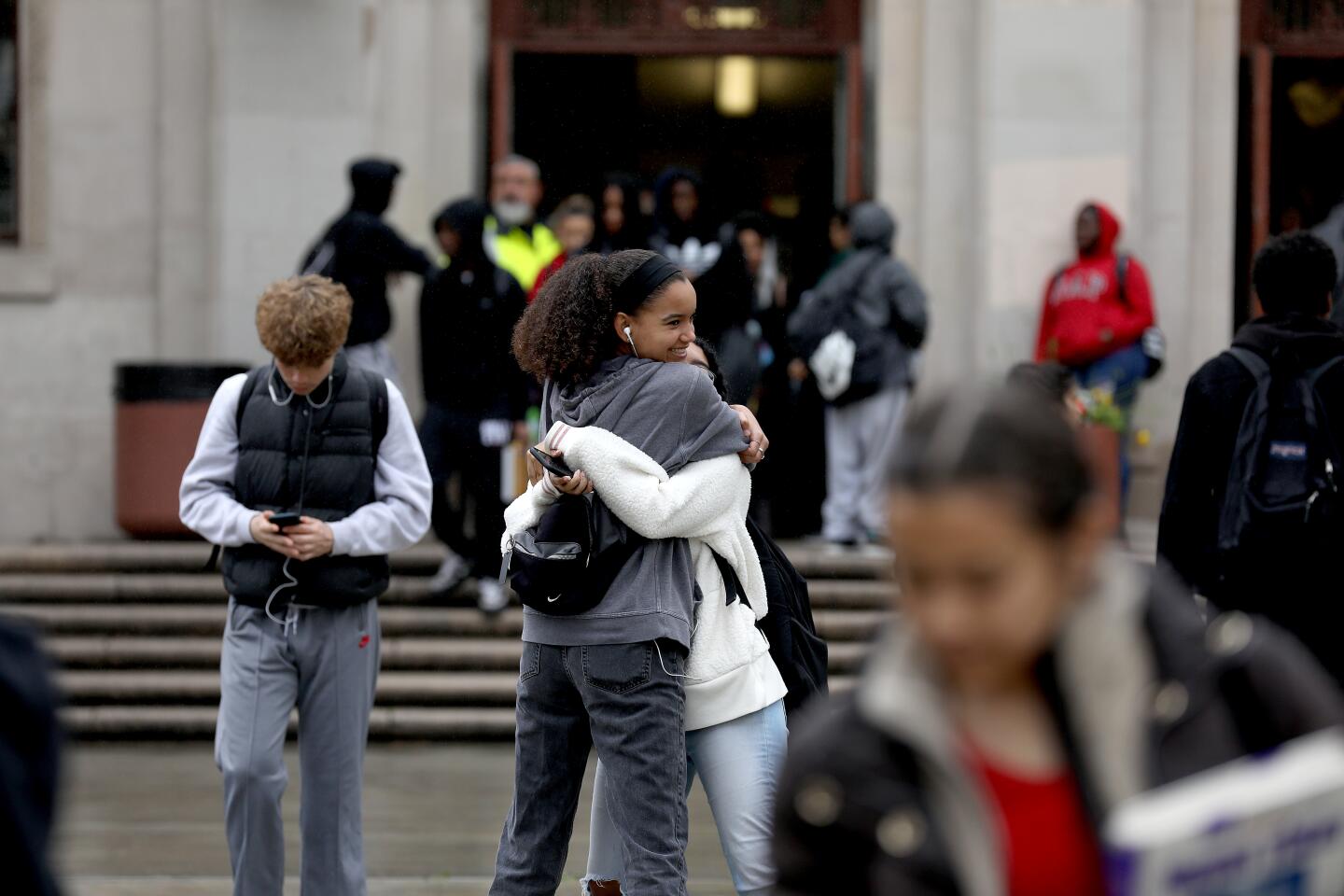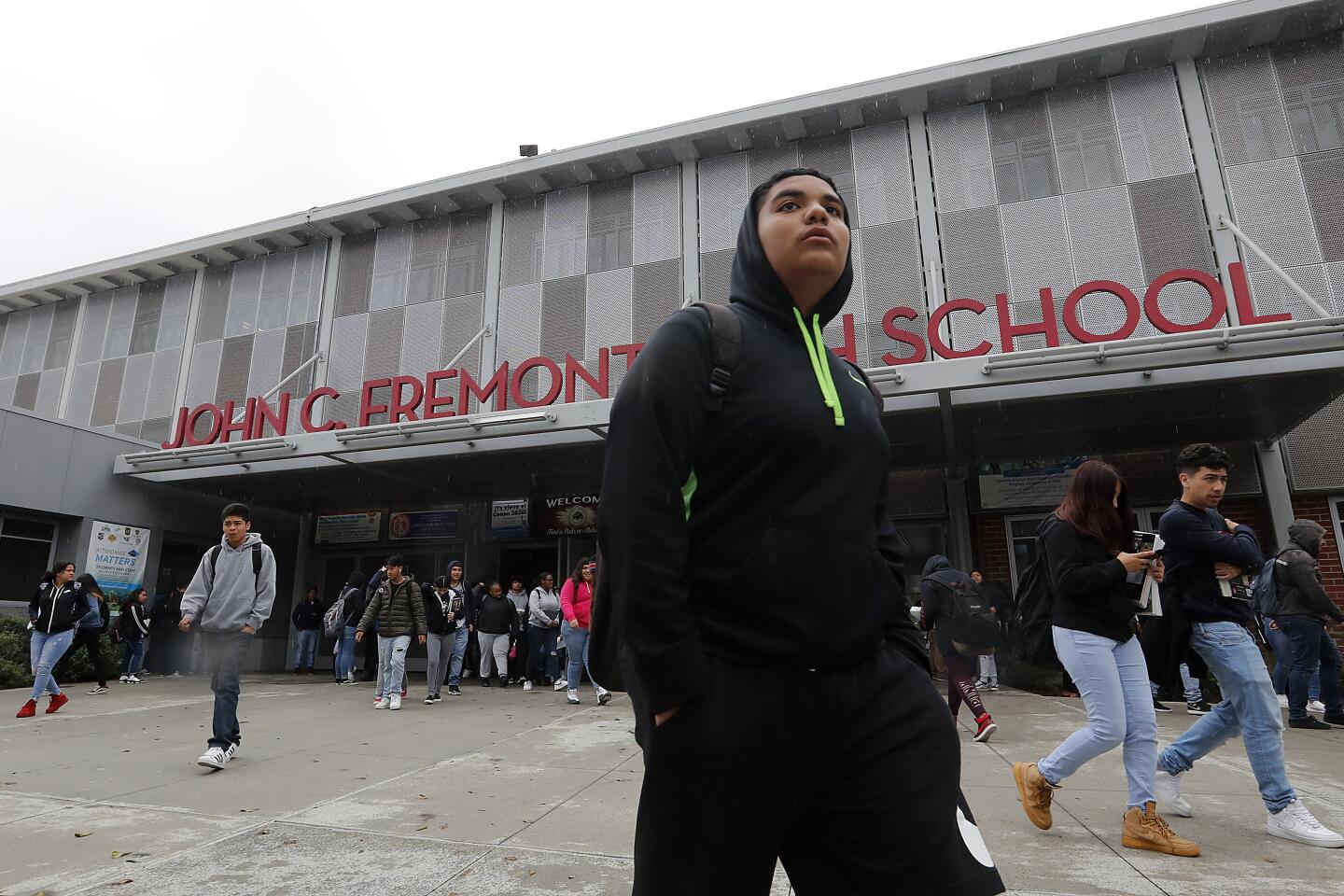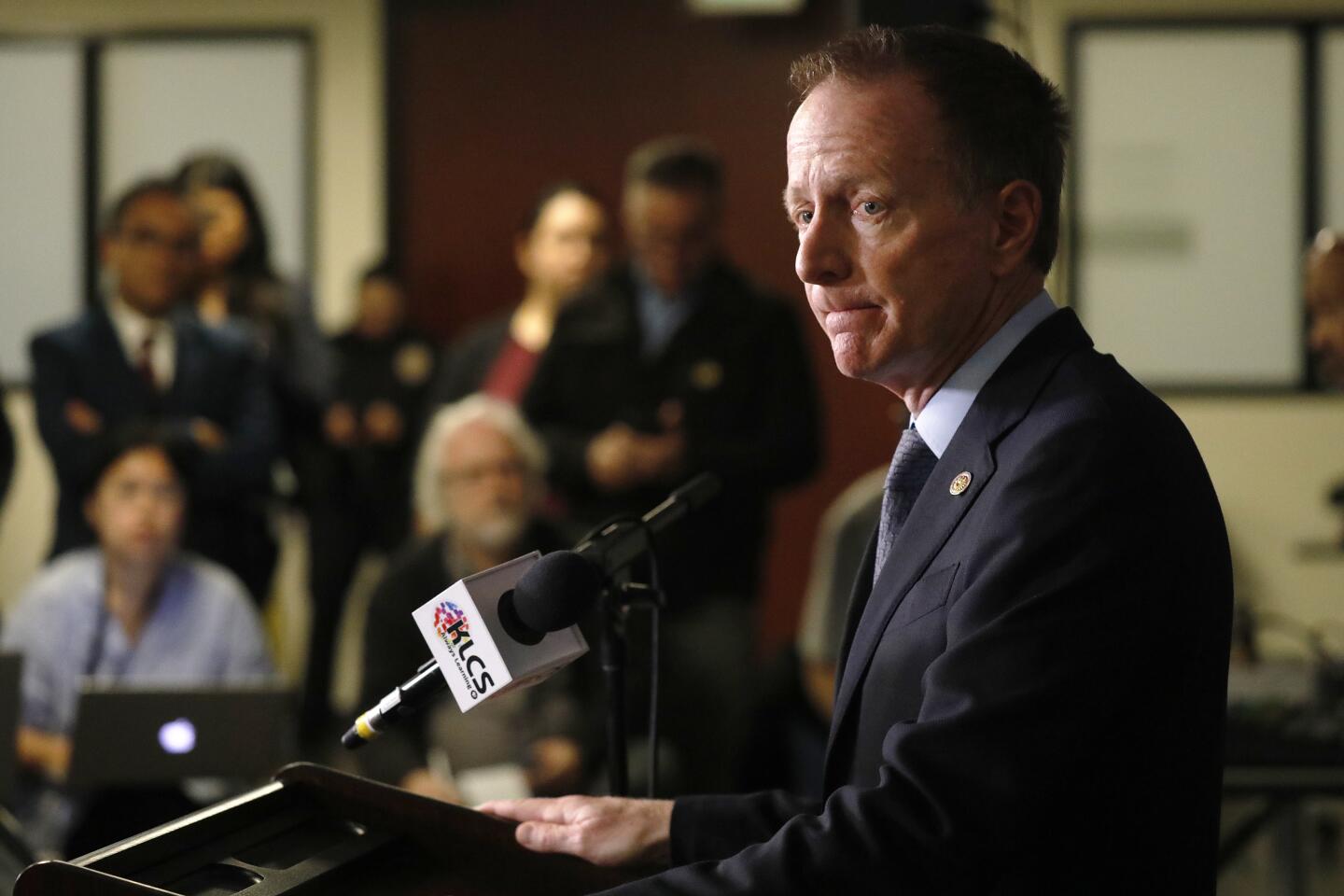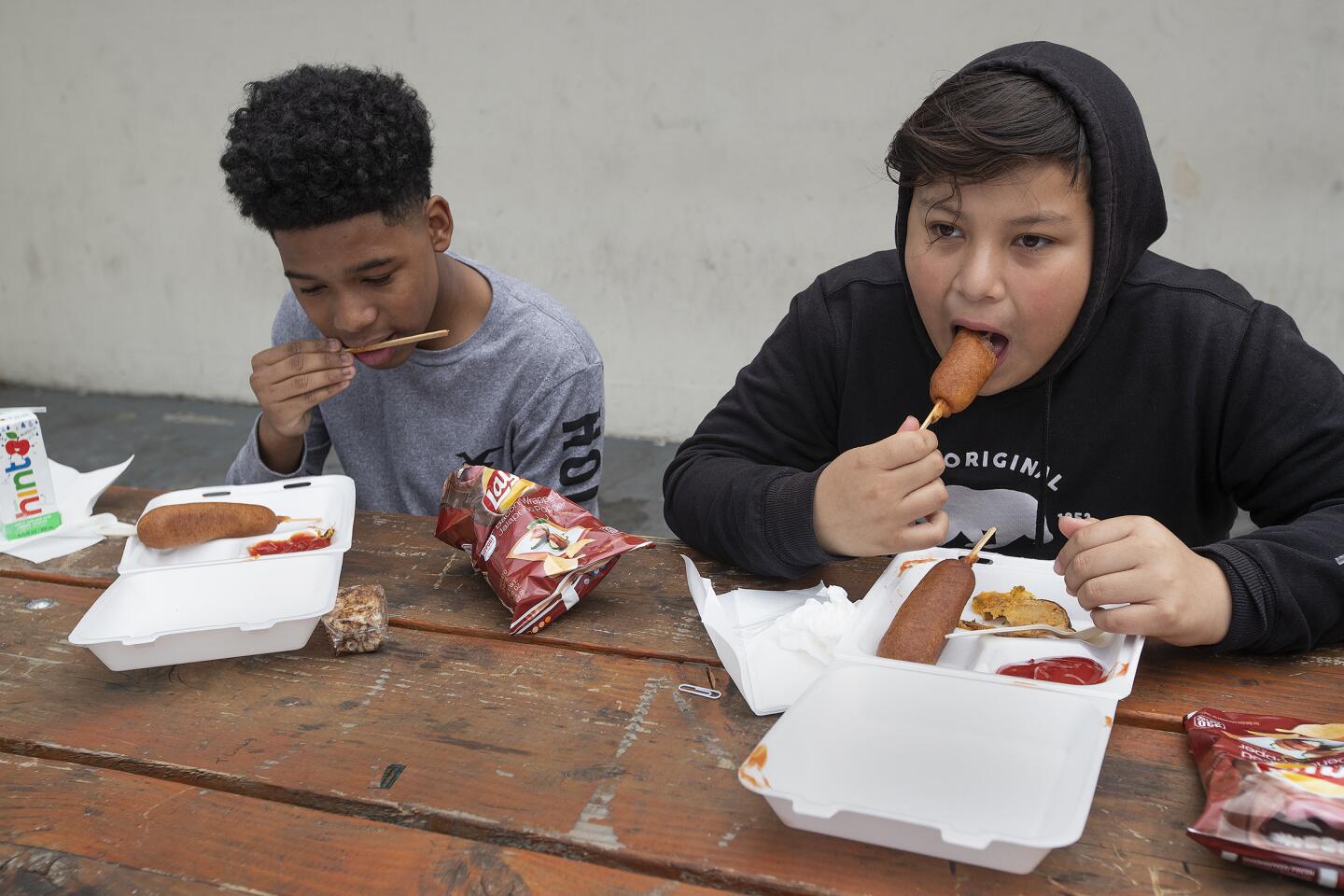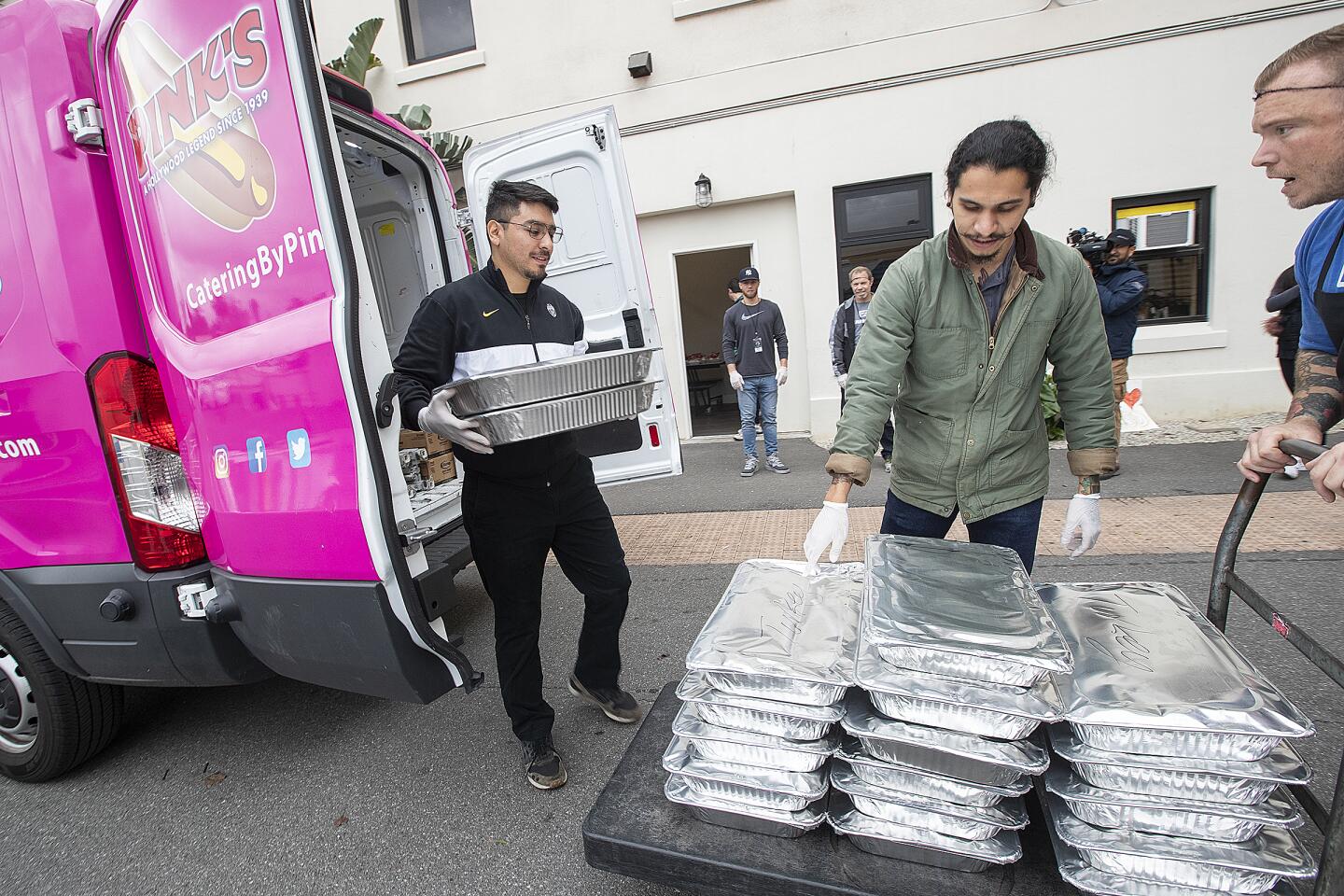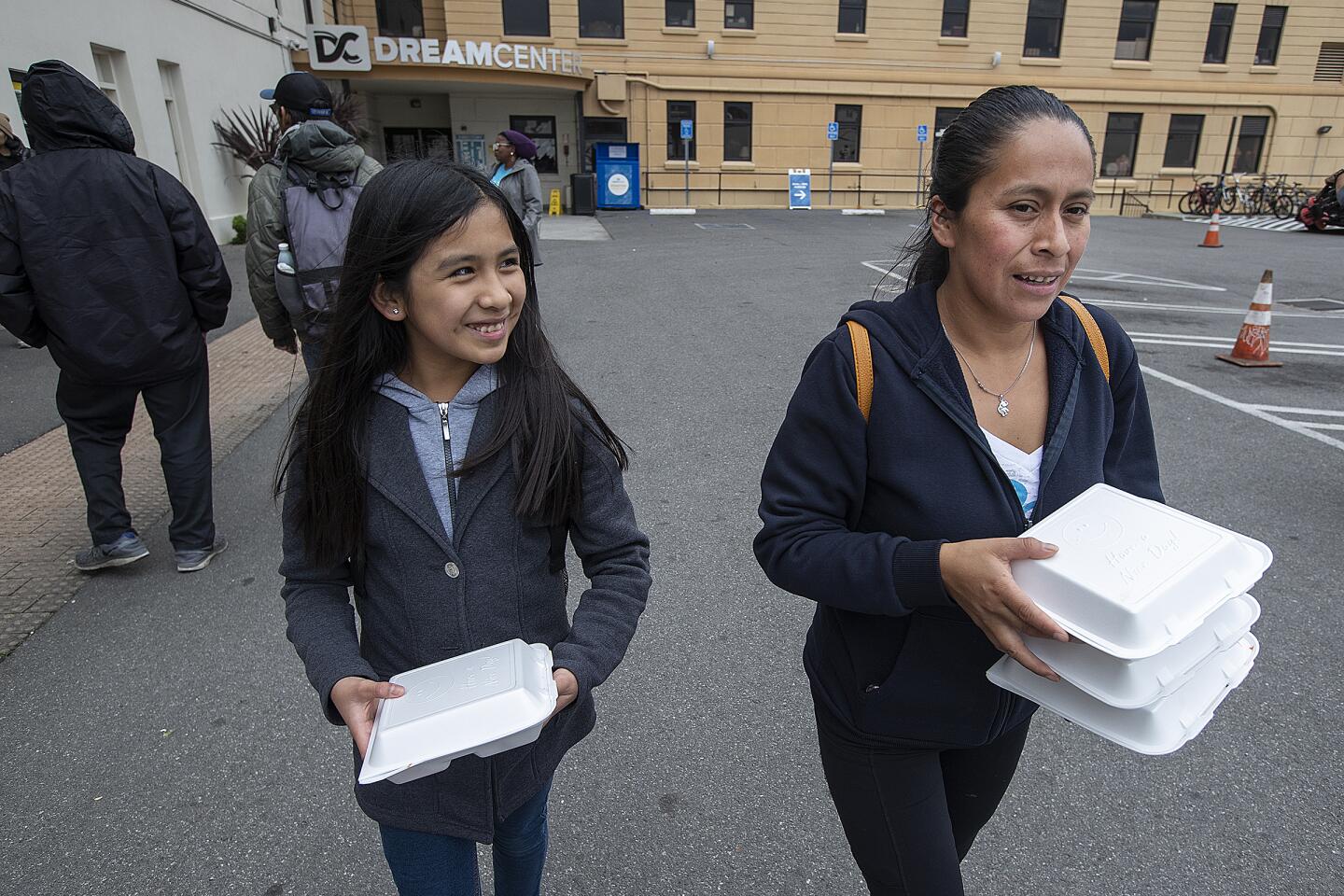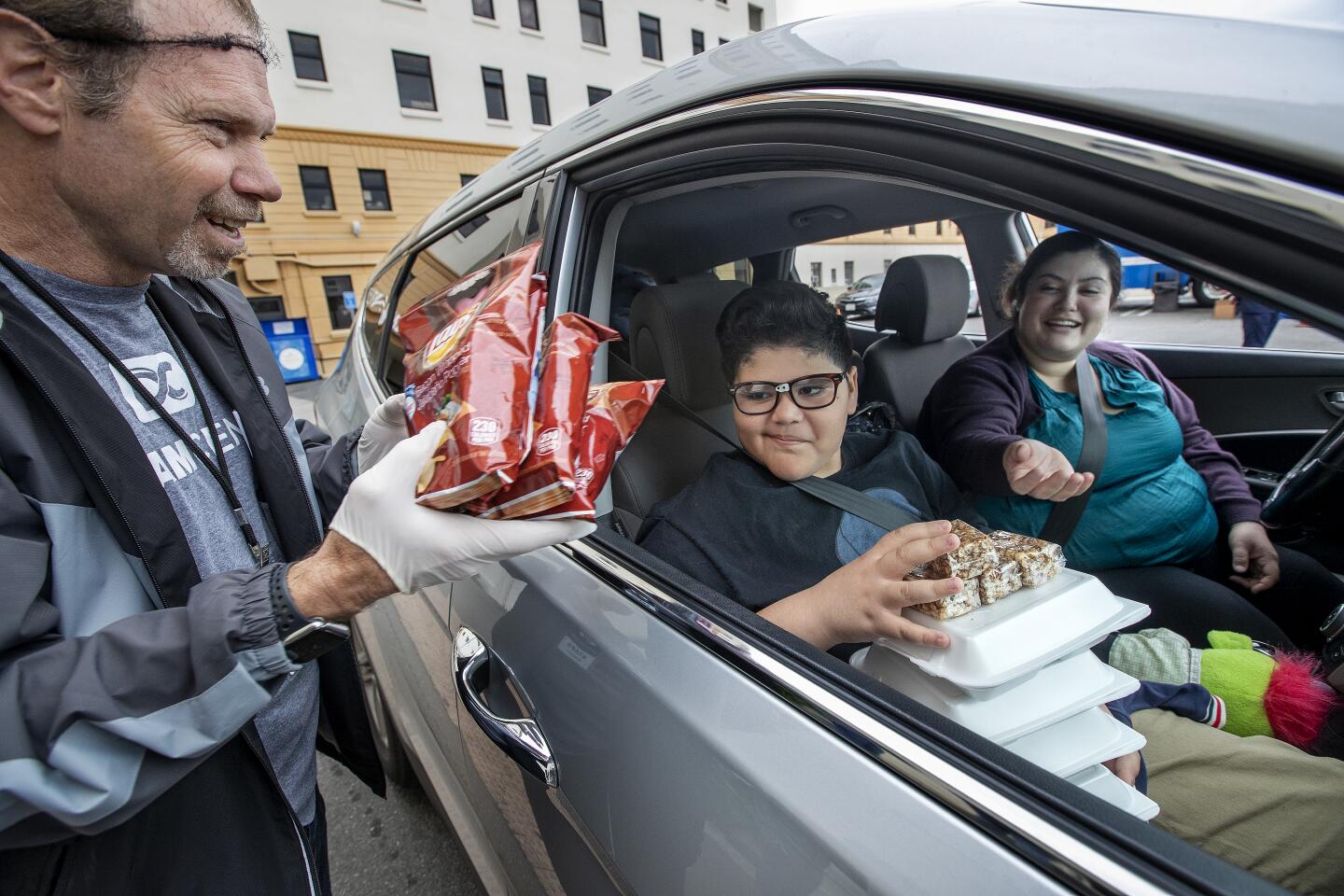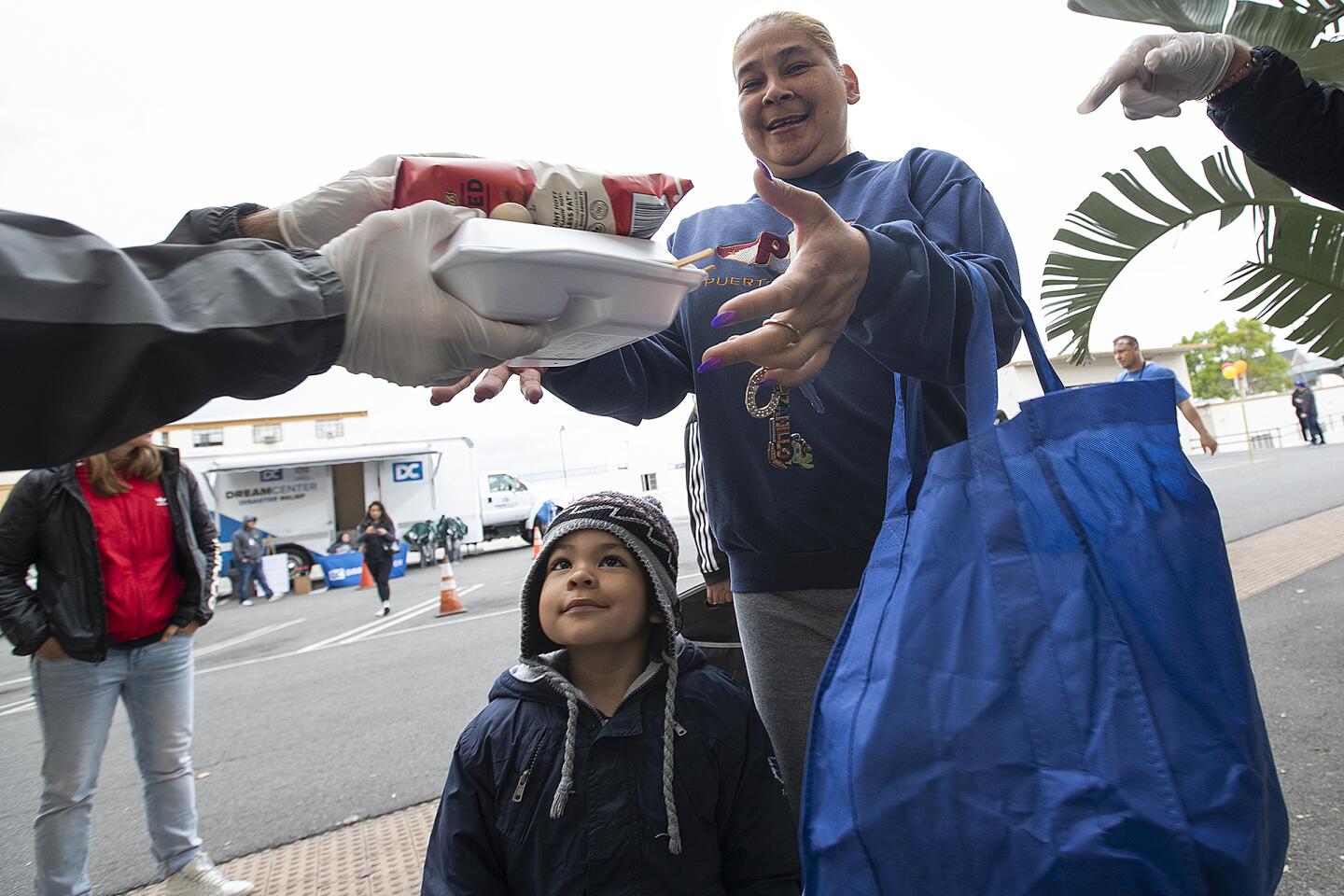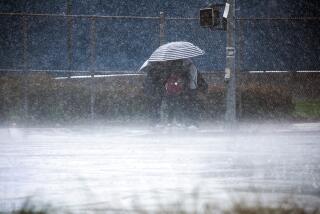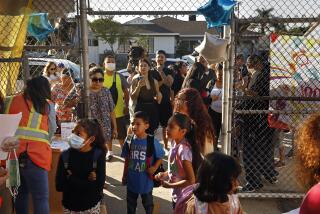Schools are closed, but learning must go on. How is this working for the neediest students?
- Share via
In a webcast to more than 7,500 school district officials and educators across California on Wednesday, the message was clear: Campuses are closed in response to the coronavirus pandemic, but school — and learning — are still in session.
“While we are in very unique circumstances at this time, we are still providing education to our students,” State Supt. of Public Instruction Tony Thurmond said. “School is not out, but we are finding a different way to deliver it.”
Nearly all schools across the state have shut down and many school districts had announced weeks-long closures. But Gov. Gavin Newsom on Tuesday evening said schools are likely to remain closed even longer — perhaps for the remainder of the academic school year, a disruption to the education of 6.1 million students.
Newsom stuck to that position in a Wednesday update, although state and local school officials stressed that no official directive has been issued.
But the quick-moving developments have sent volunteers and educators scrambling to establish online coursework, student meals and other support services for their many students in need.
Swift actions have already been taken: Homework packets, online videos, laptops and tablets have gone home. Private donors and businesses have stepped up to provide broadband access and equipment for students. Parents are scrambling to set up makeshift study areas in their homes. Many teachers are going live online for instruction.
Newsom penned an executive order Wednesday that canceled this year’s statewide standardized testing to relieve some of the stress weighing on students and educators — as well as the matter of how the tests could be given.
A top priority has been feeding children. More than 60% of students in California qualify for free or reduced-price meals because they are members of low-income households.
In Los Angeles Unified, the nation’s second largest school district, officials spent days training volunteers and prepping a “grab-and-go” meal pick-up program for the more than half a million children affected by the shutdown — most of whom rely on school for their weekday breakfast and lunch, sometimes even dinner. Across the state, school districts from San Francisco to Fresno and San Diego figured out their own ways to do the same.
But even more complicated questions surfaced among parents and advocates this week: How are schools going to teach English learners and students with disabilities? What about students of color already on the low end of the achievement gap?
Officials from the state department of education, in the web meeting Wednesday, told frustrated school leaders they are working on answering the many questions sent about special education services.
“We hear from our teachers and our administrators that you need guidance on how to ensure equity for all of your students, including your students with disabilities at a time when ... we’re not likely able to physically provide those supports and services that we’re all so used to, to the same degree that we have previously,” said Kristin Wright, director of CDE’s special education division.
“So the first sentiment I want to reinforce is — do what you can. This is about equity, access and innovation.”
Elisha Smith Arrillaga, executive director of Education Trust–West, a research and advocacy organization in Oakland, emphasized the educators must “really double down on making sure we can help the students who are most vulnerable and who were already behind before this crisis occurred.”
“Low-income students, students of color and English learners across the state: Those were the students who already had less access to high-quality instructional materials and the things that they really need,” she said. Planning for these students must first meet immediate needs such as computers and broadband access at home, she said.
“We were not doing a great job as a state before this happened,” Smith Arrillaga said. “We were unprepared to go virtual for students who have no disabilities. So we are even less prepared to go virtual for students with disabilities and English learners.”
Advocacy groups will be tracking schools to ensure districts are giving all students access to a quality education during this extended period of distance learning. They are also trying to keep track of which districts are providing necessary support, such as meals and mental health services, said Victor Leung, deputy litigation director for ACLU of Southern California.
Linda Darling-Hammond, president of the state’s board of education, said on the webcast that the safety and well-being of children and staff has to be the number one concern during this crisis.
“It is nothing to be taken lightly and it’s a huge challenge that we can use to catapult to more equity,” she said. “One of the things that crises like this do is they highlight the inequalities in society — in ways that bring things to the fore that otherwise people are not dealing with.”
School leaders are bracing for long weeks and possibly months ahead. The state education department plans to update guidance to school districts every Friday going forward, “to continue the conversation.”
For Los Angeles school board member George McKenna, both hope and frustration weighed on him Wednesday as he stood outside Dorsey High School with volunteers handing out meals. The past few days have been a whirlwind of swift changes, but he’s not quite accepted the governor’s comments that traditional schooling on campus may be done for the year.
“I know that we need to keep our children safe, but we can go overboard, and you can see the community going overboard with hoarding and wiping out what’s in the markets and all of that,” he said. “But I think some stability will come in a couple of days.”
McKenna said the school board and senior leadership would reassess the situation Monday as they plan the next necessary steps. The district is doing what it can to provide academic support to students, he said. But L.A. Unified students already were dealing with inadequate resources.
“It’s a tough thing and parents have to leave the home to go to work — those who can go to work. So what happens to the children? There’s a question we’re not answering now. We’re just saying: ‘Do the best you can and we’re with you and we love you,’” he said. “But it feels sometimes like we’re flying the plane and repairing it at the same time.”
More to Read
Sign up for Essential California
The most important California stories and recommendations in your inbox every morning.
You may occasionally receive promotional content from the Los Angeles Times.
